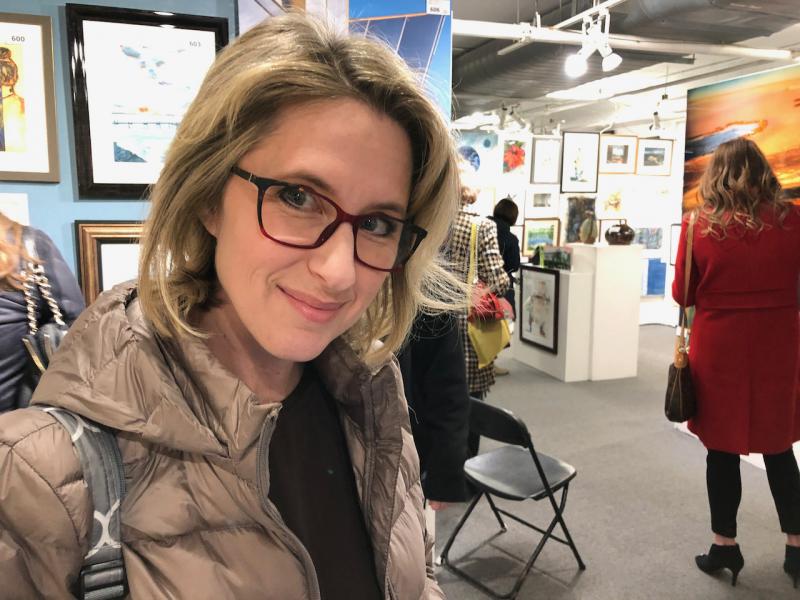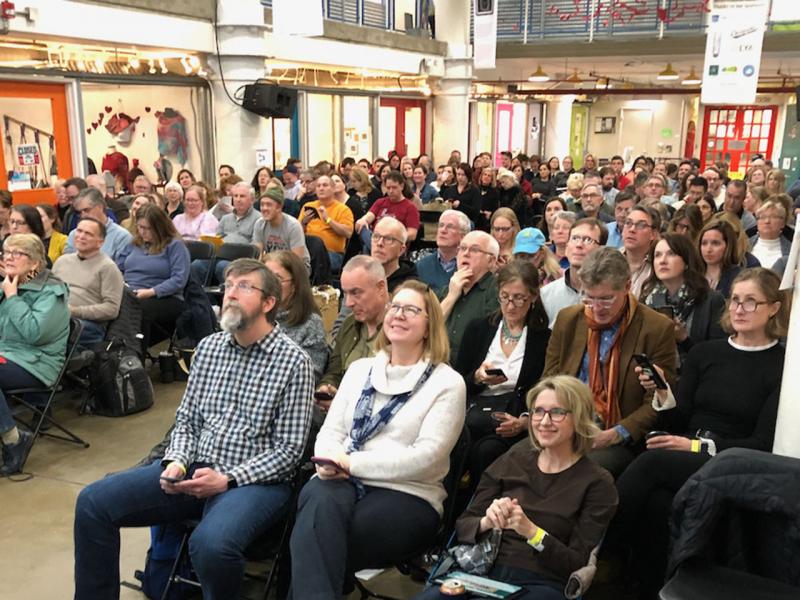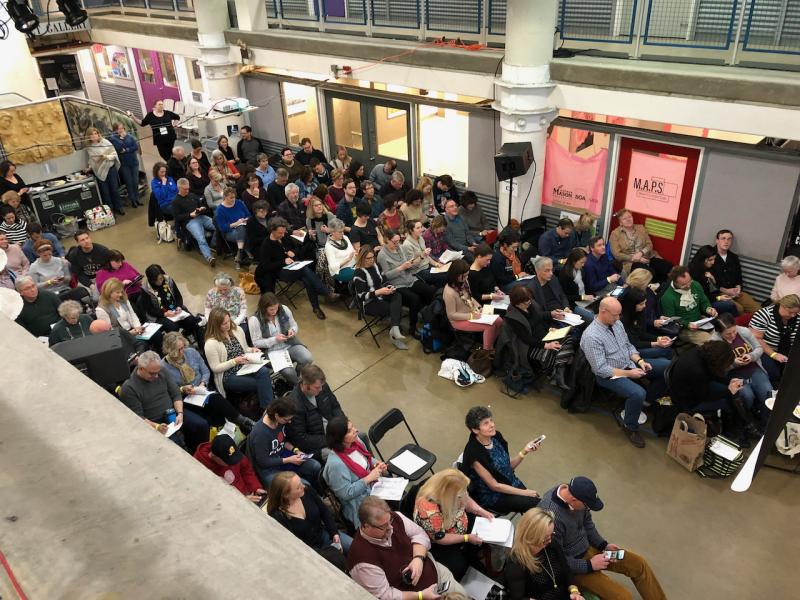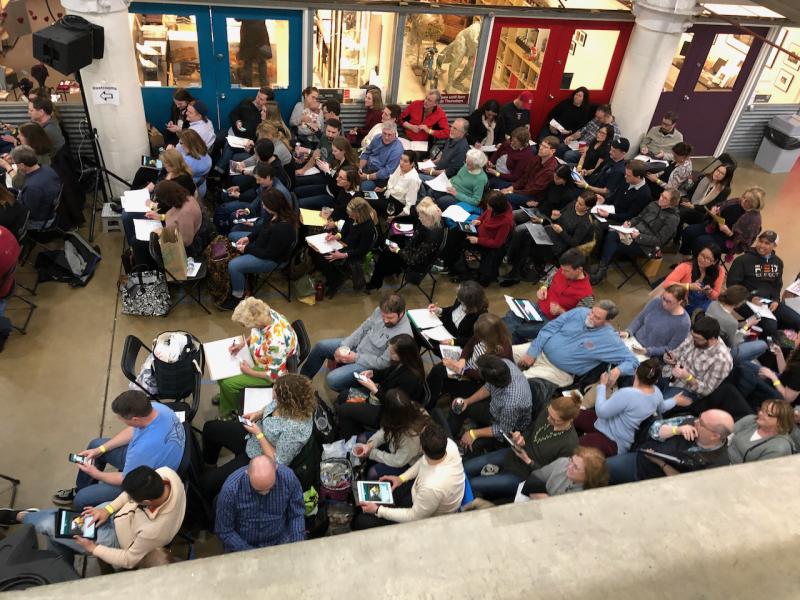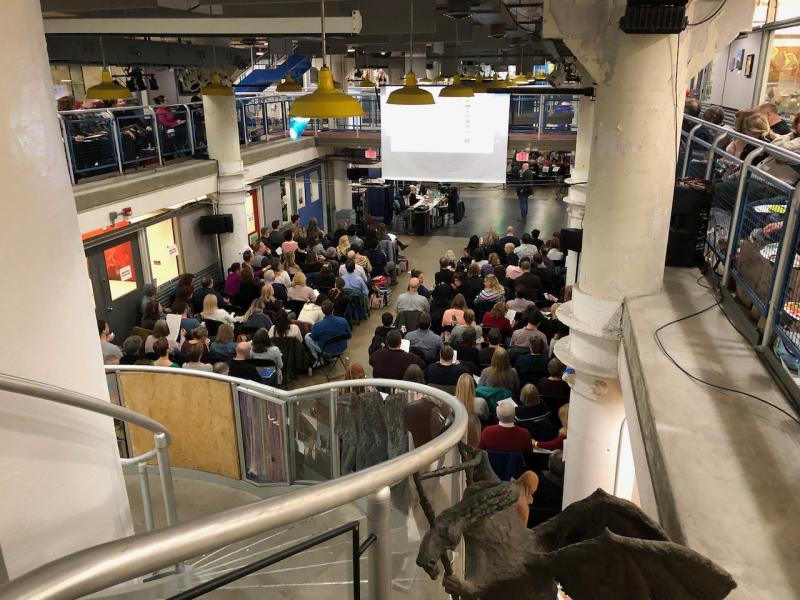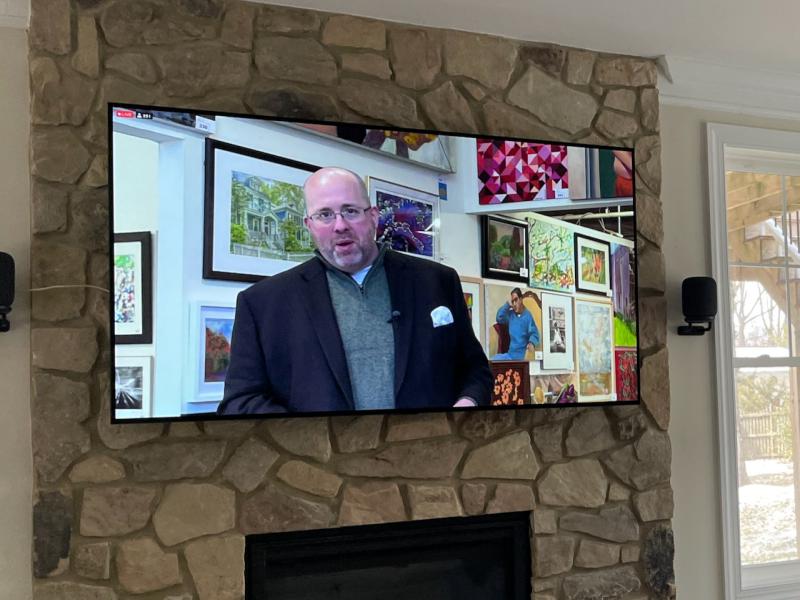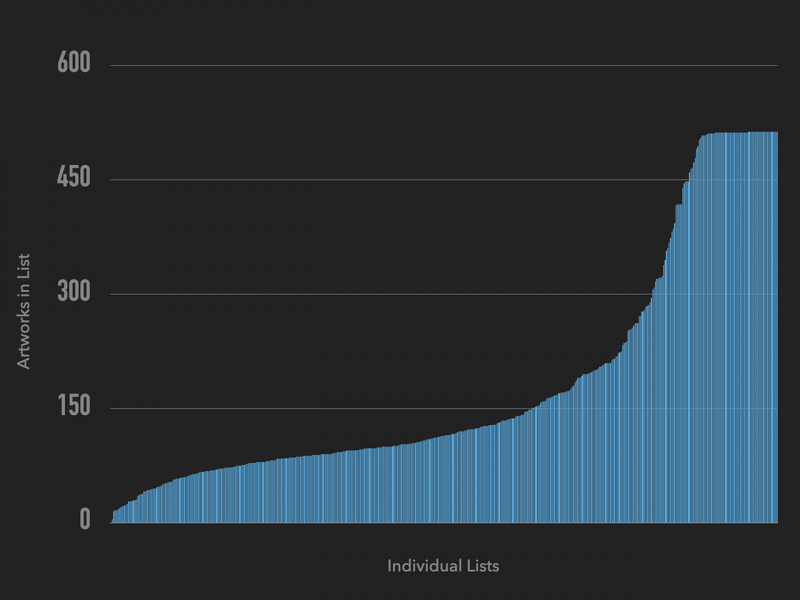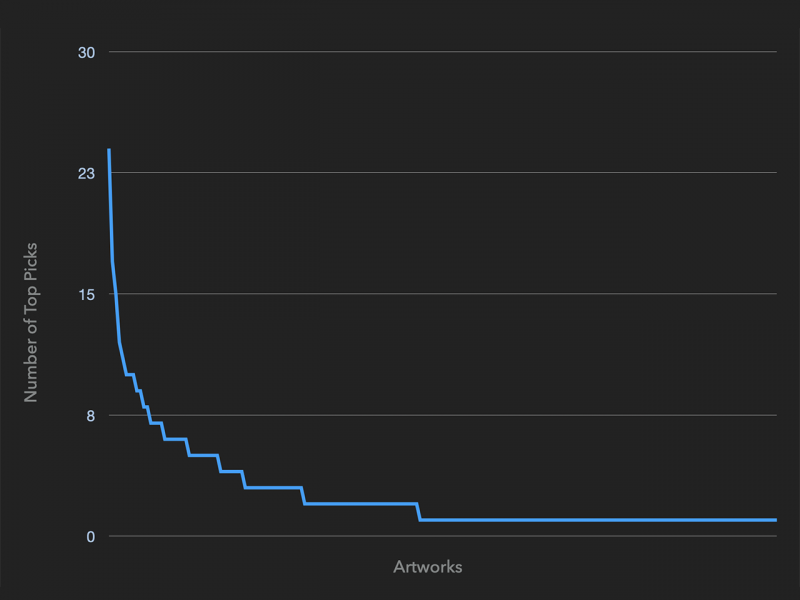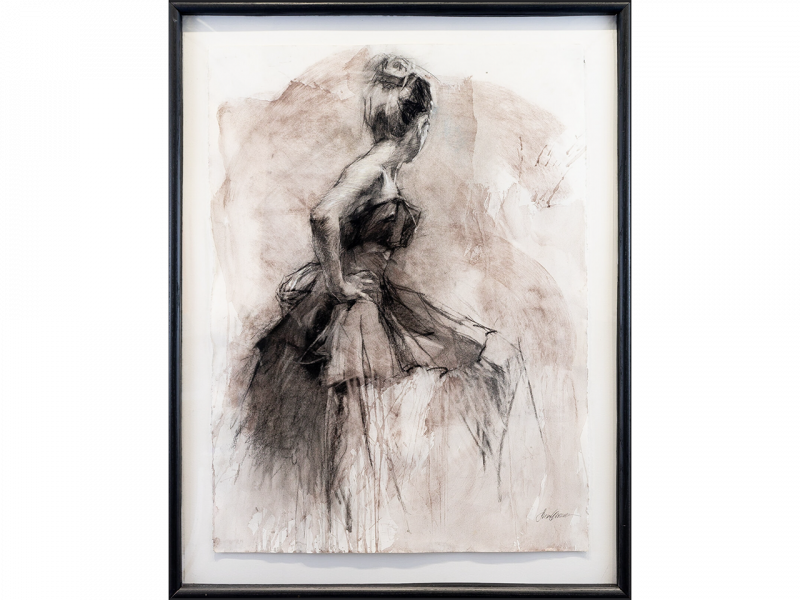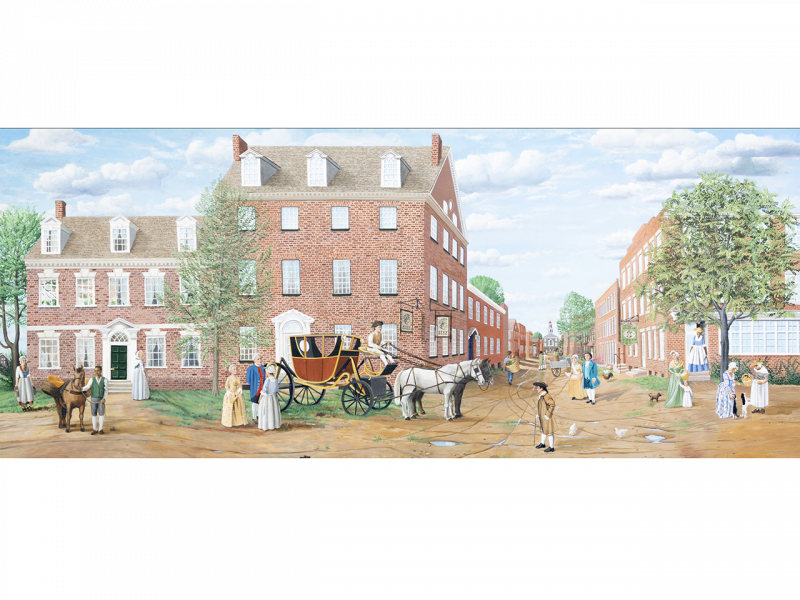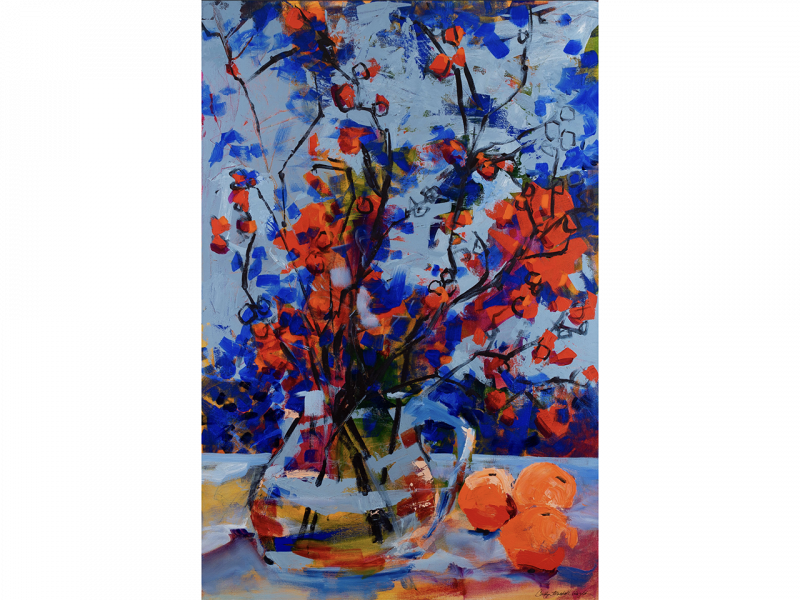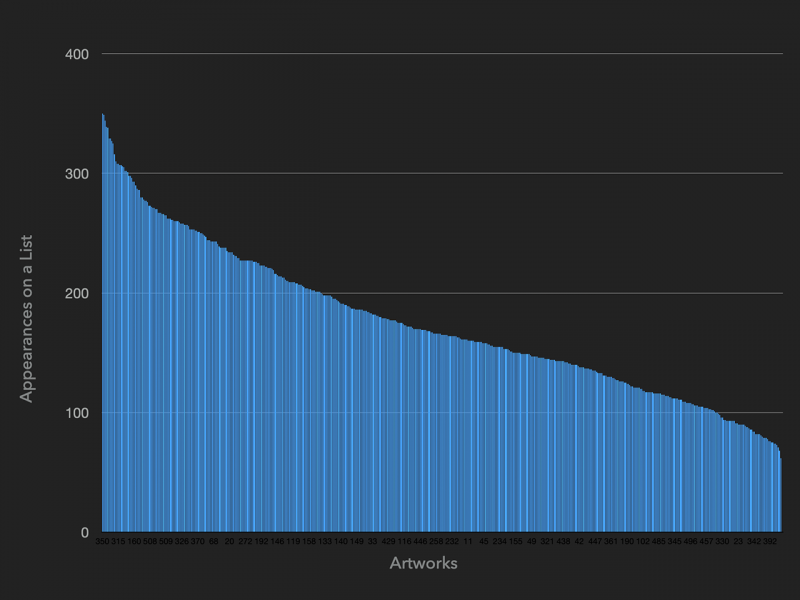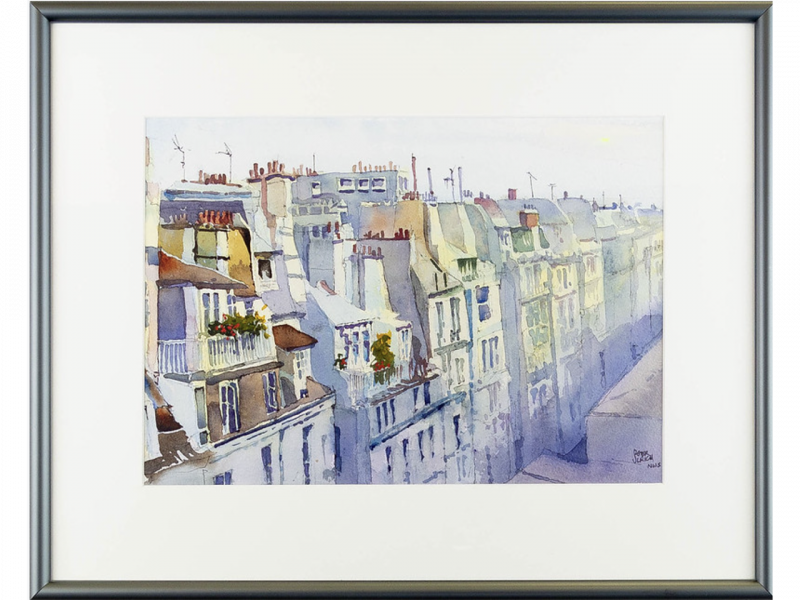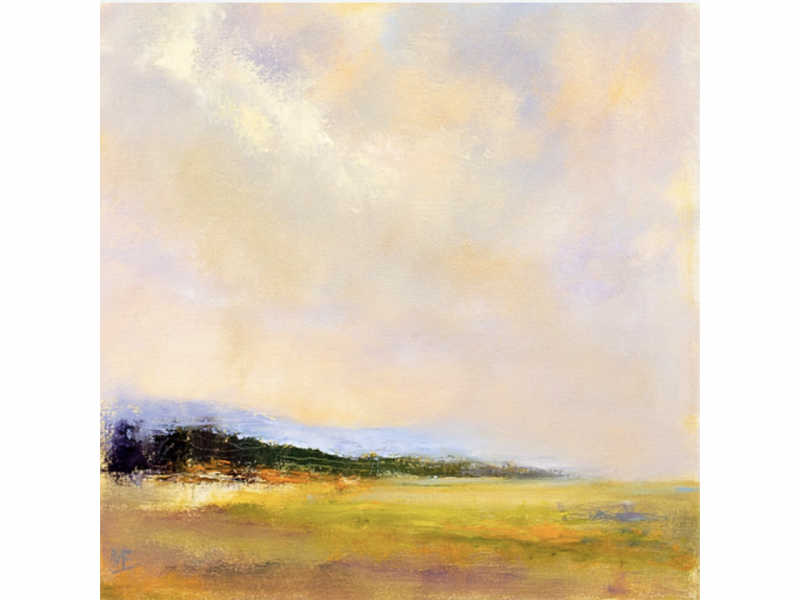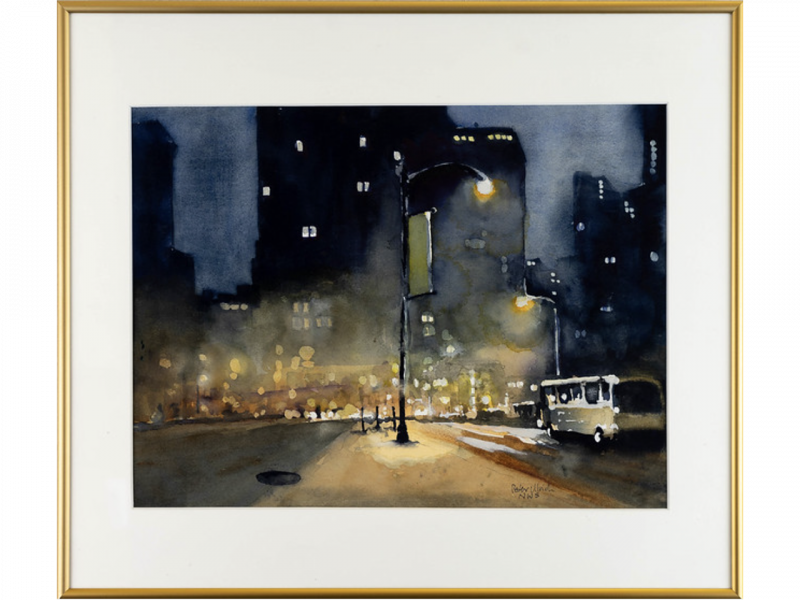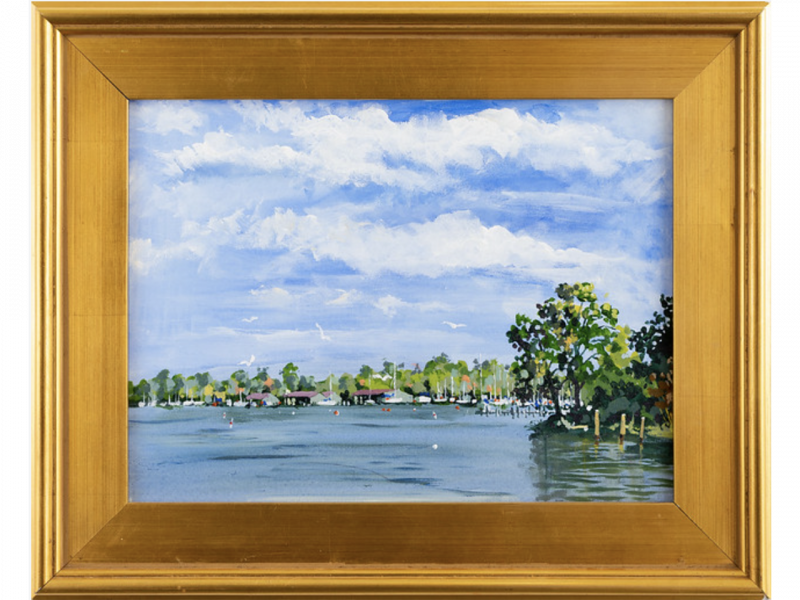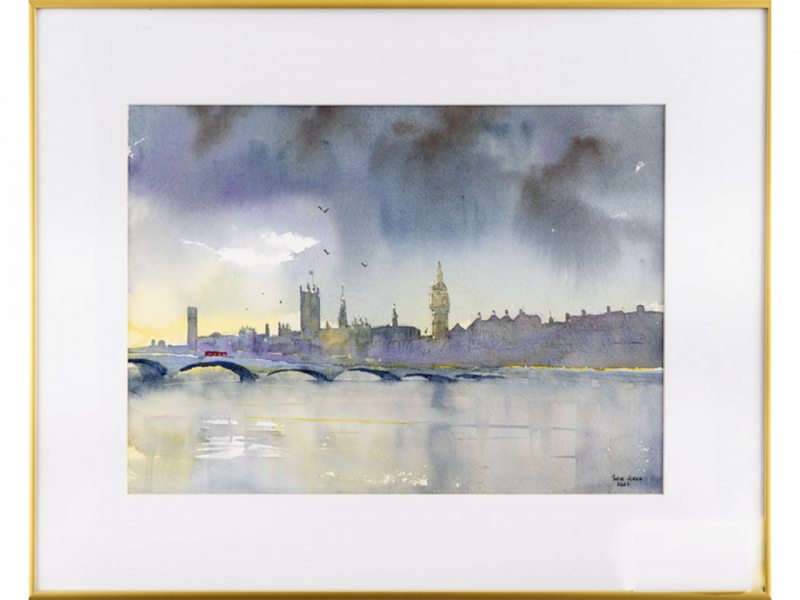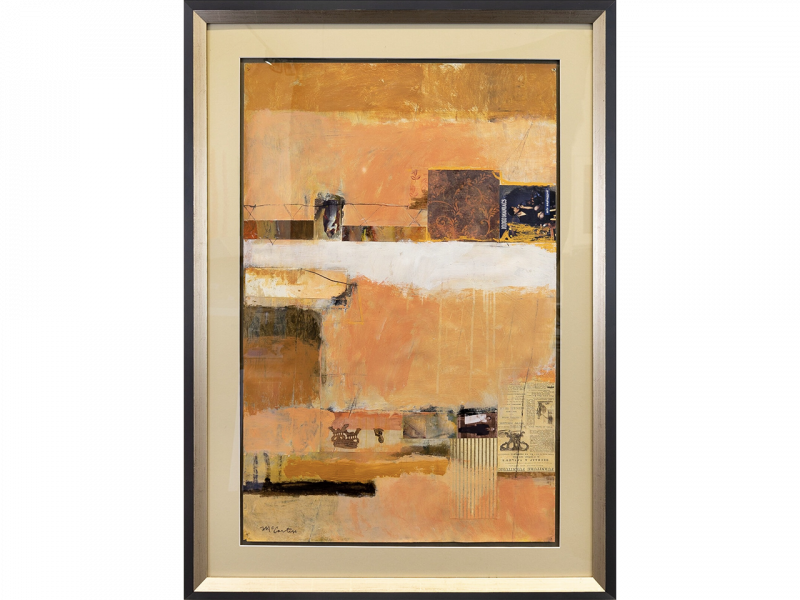The Patrons’ Show is an unusual event, perhaps the only of its kind. Each year, members of the Art League, which include numerous notable local artists, donate art for the winter event, usually six to seven hundred pieces. The art is hung in the Torpedo Factory gallery for a couple of weeks and images are published online and to an app built for the event, for which the general public buys tickets at a fixed price (in 2021 it was $225). Lisa and her husband have attended the show for many years and have gone home many times with a prized piece of art, though they have wondered how they and the numerous other repeat attendees are seemingly able to do that year after year, until 2021 when COVID provided a path to gather insight into the unique event, its attendees, and their taste in art.
As Lisa Roberson slowly moved through the Art League’s gallery inside Old Town Alexandria’s Torpedo Factory, she considered each of 500-plus artworks. With the aid of an app on her phone, she rated the pieces, knowing that in just a few days, she and her husband would be going home with one of their favorite pieces of art found within these four walls. The couple, like hundreds of other people, were participating in the annual Patrons’ Show, which for over 50 years has been the largest fundraiser of the Art League, a charitable and educational nonprofit visual arts organization that serves the community through its gallery, fine art school, art supply store, and arts-outreach programs.
The event typically occurs in person at the venue, when a crowd of attendees packs into Torpedo Factory for several hours and names of ticket holders are randomly selected. It’s not an auction. There’s no bidding. When the first person’s name is selected they choose their favorite piece of art, and the art is theirs to keep. The next person that’s randomly drawn gets to choose from all the remaining art, and so it goes until each of the roughly 600 names are called. The lively crowd cheers for some of the more unusual pieces and lets out the occasional sigh of disappointment when a particularly popular piece is chosen.
There’s also the booing. Occasionally the crowd will “boo” someone when they request pieces of art that have already been selected by someone earlier in the event and thus no longer available. It’s done in a lighthearted way. Like a good natured ribbing because that person is slowing things down. But it also encourages everyone to pay attention to what’s being selected so you can be prepared to quickly choose from what’s left when your name is called. After all, having hundreds of people “boo” you, even if it is just in jest, is something most people try to avoid.
Of course, none of that could happen during a pandemic.
Pandemic Planning
Planning for the 2021 Patrons’ Show started in the summer of 2020. While it was clear that packing in hundreds of people into a building in the winter of 2021 wasn’t going to happen, the fundraiser was as important as ever given that the Art League’s normal revenue streams like art classes and programs had been majorly impacted by the pandemic. The decision was made to have an online Patrons' Show, and with that would come the opportunity to gather data that answered many of the questions around why this event is so successful for the participants like Lisa.
Most years, participants make lists of the artwork they would like to have and order it from their most to least favorite, holding onto it in preparation for their eventual opportunity to choose from the pieces because after all, they don’t know what artwork will still be available when their name is called. Out of necessity, the 2021 Patrons’ Show was different. Participants submitted their list of art before the drawing via the event website or the aforementioned app. The name drawing then occurred on video stream and when someone’s name was called, their top available pick of art was automatically assigned to them by software that kept track of all the lists submitted. Consequently, for the first time ever, there was a record of both the art that participants received AND what they wanted to receive, in the specific order they preferred it. This data painted a fascinating picture of the event.
The Lists
Looking at the lists of art submitted shows that participants put a lot of time and effort into rating and ordering the artwork. The median list had 112 artworks on it with all but a handful of lists had at least 20 artworks. In fact, more than 10% of the population had close to all of it on their list. This may have been a result of the app making it easy for people to organize art into broad buckets assigning one to five stars. We don’t know if the people with more than 500 artworks on their list precisely ranked all of them.
The Goods
Arguably the most important thing the data can tell us is how well the event worked out for the people participating. Has Lisa just been a lucky outlier or do people commonly get a piece of art that they love? Spoiler alert: it turns out that it’s freakishly common for people to go home with a piece of art near the top of their list. In fact, nearly one in five people went home with their top pick. Let that sink in. After surveying over 500 artworks, 19.6% of people got to keep their favorite piece. And the numbers just get better from there.
More than half the participants received an artwork that was one of their top five choices. Another way to say it is that 54.3% of people got to keep something they judged as in the top 1% of the show. From my personal experience, people are typically over-the-moon to get something from their top five.
Going further up the lists, the data show that two-thirds of people received an artwork in their top 10 and 80% of people received an artwork in their top 20.
Participants Received Art That Was:
| Their Top Pick | 19.6% |
| In Their Top 5 | 54.3% |
| In Their Top 10 | 67.1% |
| In Their Top 20 | 80.2% |
| In Their Top 50 | 93.3% |
Diversity of Taste
So why are some many people getting a good outcome? Could there be some magical artificial intelligence be optimizing the outcome? Nope, it turns out that people just don’t universally agree upon the desirability of pieces of art. Aside from personal taste, there may be all sorts of factors involved: size, style, media, subject matter, connection to the artist, available wall space at home. It’s difficult to know but what we can do is look at the art and see how people ranked it.
A natural place to start is with the top picks, the highest-ranked pieces that, given the opportunity, a person would take home before any others. There’s every reason to think that a good deal of consideration goes into top picks.
Of the 515 artworks in 2021, 192 of them were at least one person’s top pick. That’s right: 37% of the art at the show was ranked as the best one for at least one person. In fact, more than 100, roughly 20% of the art, was exactly one and only one person’s favorite piece. As you can see from the graph below there were some artworks that multiple people chose as their top pick, but the curve drops quickly and flattens out.
Looking at the most frequently top-rated art we see that, “The Dress,” by Susan O’Neill, was chosen by 24 people followed by, “George Washington at Gadsby’s Tavern,” by Patrick Kerwin with 17 top picks. “Clouds Over Prime Hook,” by Tess Olsen, was the top pick for 15 people.
Taking that to the next step, we can look at how common it is for an artwork to show up at the top 5, 10 or 20 of someone’s list. This helps us understand if interest in the art is concentrated to a small subset of pieces. As you can see from the chart below, it’s the opposite. People’s interest in owning a particular piece is spread across almost all of the art. In fact, 75% of the art shows up in at least one person’s top five and almost all, 96.7% of the art, shows up in at least one person’s top 20.
Artworks Show Up in at Least One List:
| As a Top Pick | 37.3% |
| In The Top 5 | 75.0% |
| In The Top 10 | 89.5% |
| In The Top 20 | 96.7% |
Finally, we can look at how often an artwork shows up on a person’s list. As you can see from the chart below, nothing is universally liked nor disliked. In fact, the piece most frequently listed only showed up on 350 lists meaning that even the most popular artwork, for this definition of popular, more than 150 people didn’t want it at all. Even the art that showed up on the least number of lists was on a list 62 times.
So how did our heroine, Lisa, ultimately fare? She and her husband have participated in the Patrons’ Show for the last seven years and while some years were disappointing, at least three of those years, 2021 included, they went home with the top artwork on their list, 10,000 Maniacs by by Joyce McCarten. It’s perhaps fitting that they received that particular piece of art as they were the only two people who had placed it at the top of their list.
Beyond Art
As for big-picture conclusions that we can draw following the 2021 Patrons’ Show, the data can potentially provide insight into all sorts of situations like dating, or hiring, buying a home or any other situation where there are a multitude of factors involved and you’re looking for the best fit for you as opposed to some absolute notion of best. It’s a reminder that there are plenty of times that someone else doesn’t have to lose for you to win.
Of course, it’s possible that 2021 was an anomaly in some way or that gods of random number generation happen to pick people is the best possible order to make everyone as happy as possible but all that seems highly unlikely. All the evidence seems to point to the fact that people want different things. In situations like this, that’s a wonderful thing.
If we’re able to gather data in the same way next year, I think it will lead to the same conclusion. Regardless, I know I’ll be participating in future Patrons' Shows along with my wife, Lisa.

